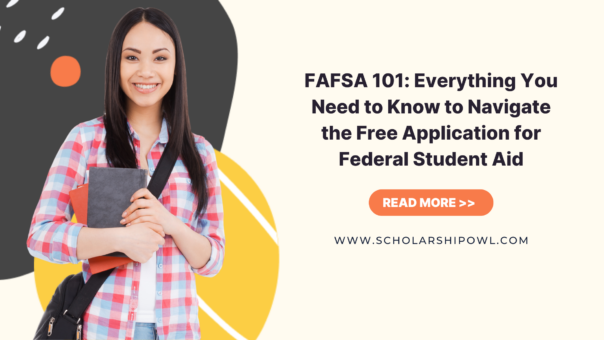Navigating the world of college funding has always been complex, but with new legislation constantly reshaping the landscape, staying informed is more crucial than ever. The “One Big Beautiful Bill Act” recently cleared Congress and was signed into law, impacting students, colleges, and higher education as a whole.
Reading through the entire Act would require extensive time and effort due to the dense legal material, so we are breaking down the key aspects of this Act as it relates to higher education. Note that the full legislation covered numerous policy areas, but we are focusing solely on its impacts on students and colleges. Our goal is to provide a clear, unbiased look at how these changes might impact your financial aid, loan options, and even your choice of institution, highlighting both the stated intentions and potential challenges.
How is Federal Financial Aid Changing as a Result of the “One Big Beautiful Bill Act”?

The “One Big Beautiful Bill Act” introduces significant shifts across higher education that primarily go into effect on July 01, 2026. These changes attempt to rein-in student loan borrowing, while also increasing accountability for that debt amongst both borrowers and colleges. There are also some positive changes that expand access for Pell Grants – more about that below.
Win more scholarships with less effort
Simplify and focus your application process with the one-stop platform for vetted scholarships.
Check for scholarshipsImpacts of the “One Big Beautiful Bill Act” on Student Loan Borrowers

-
Eliminates Deferment or Forbearance for Unemployment or Financial Hardship
The new legislation prevents borrowers from qualifying for a period of non-payment (deferment or forbearance) due to unemployment or financial hardship. This is a significant change, and will impact borrowers who are struggling financially. Previously, borrowers knew that if they were enduring significant financial hardship, they would be able to request a temporary period of non-payment to help them get back on their feet.
Unfortunately, as of July 01, 2026, unemployment or financial hardship will no longer qualify borrowers for a deferment or forbearance. Borrowers will be required to make a minimum monthly payment regardless of their financial situation. More on this below.
-
Existing Student Loan Debt
For those who have already incurred federal student loan debt, the “One Big Beautiful Bill Act” rolls back some student loan protections. While private student loans are not directly affected by this federal legislation, the broader environment for federal loan repayment and forgiveness is shifting.
Borrowers with existing student loan debt should review the next section in detail, as there are significant changes to student loan repayment plans.
Note that your federal student loan interest rate will not be changed by this legislation. The interest rate applicable to your student loan(s) is set based on the year in which you borrowed the funds. Find your interest rate here.
-
Changes to Student Loan Repayment Plans

This legislation reduces the number and variety of loan repayment plan options to just two choices for both existing borrowers and future borrowers.
-
- Existing student loan repayment plans will begin phasing out for borrowers with existing student loan debt in July 2026. You’ll have between July 2026 and July 2028 to select from one of these two plans. If you do not proactively make your own choice, you’ll automatically be put into the Standard Repayment Plan after July 01, 2028.
- If you take out new loans after July 01, 2026, you’ll lose access to the existing plans, even for loans you took out prior to this legislation. The legislation incorporates language that states that if a borrower takes out new loans after July 01. 2026, ALL loans taken out by the borrower must be repaid under the same repayment plan.
-
Standard Repayment Plan
Borrowers will have a fixed payment for 10 years to repay their loan with the Standard Repayment Plan (SRP). If you have consolidated your federal student loans, you’ll have between 10 to 30 years to repay your consolidated loan:
-
-
- If you owe less than $25,000, you’ll have a 10 year repayment period
- If you owe between $25,000 – $50,000, you’ll have up to 15 years to repay
- If you owe between $50,000 – $100,000, you’ll have up to 20 years to repay
- If you owe more than $100,000, you’ll have up to 25 years to repay
-
Repayment Assistance Plan (RAP)
-
Similar to some of the existing income-driven repayment (IDR) plans, RAP bases your payment your adjusted gross income and number of dependent children; however, your monthly payment on RAP is likely to be higher than it would be on some of the existing IDR plans, which this legislation eliminates.
Your monthly payment with RAP will range from 1% to 10% of your income, depending on your income level and the number of your dependents. Unlike existing IDR plans, borrowers are not eligible for a $0 payment if they are below a certain income level.
RAP requires a minimum payment of $10 per month for those with the lowest income level. For some borrowers, even a $10 monthly payment may be difficult, depending on their circumstances.
That said, there are several advantages to requiring a monthly payment:
-
-
- With RAP, as long as you make your minimum required payment on time, the government will waive any unpaid accrued interest not covered by your payment. This will help prevent your loan balance from ballooning.
- Borrowers will make continuous progress towards repaying their loan. Even for borrowers with the lowest minimum payment, it can be motivating to see their loan balance reducing every month.
- By making a monthly payment of any amount, borrowers will remain connected to the student loan system, and may be less likely to default than borrowers who were able to avoid making payments for a period of time.
-
-
Future Student Loan Debt

If you’re planning to take on federal student loan debt in the future, you’ll encounter new restrictions:
-
-
Just Two Repayment Plan Options
- See the above section for details about repayment plan options for future student debt.
-
Elimination of Grad PLUS Loans
-
A significant change under the “One Big Beautiful Bill Act” is that it phases out the federal Grad PLUS loan program in 2026. This program has helped graduate students finance their studies. As a result, future borrowers are more likely to turn to private lenders to be able to finance their graduate education.
Current graduate school students are not effected; however, those who pursue a graduate degree after July 01, 2026 will no longer be able to take out a Grad PLUS Loan and will need to consider alternate funding sources.
-
-
Graduate Program Borrowing Caps
-
The bill places strict limits on how much money graduate students can borrow from the federal government.
-
-
- For a master’s degree, students cannot take out more than $100,000.
- For doctoral, medical, or other professional degrees, the cap is $200,000.
-
-
-
Pros and Cons of Borrowing Caps
-
Supporters of these borrowing caps feel that unlimited access to graduate federal student loans has actually resulted in colleges increasing their prices. It is hoped that by capping graduate federal loan debt, colleges may need to reduce their tuition cost.
On the other hand, opponents warn that some students, particularly those in high-cost fields like medicine, may find it impossible to pursue their programs, or will be forced into the private loan market. It is important to note that private loans are not eligible for Public Service Loan Forgiveness (PSLF), which many borrowers have relied on to reduce their debt.
Impacts on Parent PLUS Loans

When viewing their financial aid offer, one ever-present option that has been available to students is the ability for their parent to apply for a Parent PLUS Loan to help pay for their child’s education. A parent who chooses to take out a Parent PLUS Loan is the borrower, and only the parent is liable for this debt.
-
- In many families, parent and child strike a deal in which the child agrees to make all of the loan payments after graduating, despite the fact that only the parent is legally obligated to repay the loan.
- This has led to many students having greater access to a more expensive college; however, often the agreement made by the parent and child doesn’t end up being realized, leading to the parent having to make payments on the Parent PLUS Loan while trying to save for their own retirement.
- On top of this, parents often end up taking out multiple Parent PLUS Loans to support their children, leading to crippling debt.
The “One Big, Beautiful Bill Act” still enables parents to take out Parent PLUS Loans, but now the amount they can borrow is capped:
-
- Annual Limit: Parent PLUS Loans will be capped at $20,000 per child annually for new loans beginning July 01, 2026.
- Aggregate Limit: The total amount that a parent can borrow through the Parent PLUS Loan program will be capped at $65,000 per student over the student’s lifetime.
- As before, only the borrowing parent is legally liable for Parent PLUS Loan debt.
Pros and Cons of Parent PLUS Loan Changes
Parent PLUS Loans provide an important opportunity for parents to help their kids pay for college; however, the lack of caps in prior years has sometimes led to irresponsible borrowing by parents who want to enable their child to attend a more expensive university. While well-intentioned, parents often end up underwater as they may have to take out these loans every year their child is in school. And if they have more than one child, parents may feel obligated to offer the same option to each of their children.
Even if their child fully expects to be financially positioned to be able to repay Parent PLUS Loans taken out by their parent, the unfortunate reality is that many recent college grads are unable to manage their living expenses, their own student debt, AND the debt their parents took on for them. As a result, parents may be left holding the bag, putting their own livelihood and credit rating at risk.
By instituting annual and lifetime caps on Parent PLUS Loans, the “One Big Beautiful Bill Act” ensures parents will no longer be able to have unlimited access to borrowed funds for their children’s education. It is hoped that this will encourage students to focus on a more affordable college choice, and it may also reduce the likelihood of loan default for these kinds of loans. And finally, perhaps universities will be less emboldened to keep increasing their prices.
I Have or Will Have Student Debt. What Steps Should I Take Due to the “One Big Beautiful Bill Act”?

If you have existing federal loans, we highly recommend getting advice regarding your specific situation, and clarifying how this legislation might impact your existing debt, as well as current or future repayment plan options. Contact your loan servicer as well as your college financial aid officer to ensure that you understand your loan repayment plan options, any loan caps that result from this legislation, etc. If you had planned on pursuing Public Service Loan Forgiveness (PSLF), discuss this as well to understand how to preserve your eligibility for the program.
If you are currently enrolled in the Saving for a Valuable Education (SAVE) Repayment Plan, be aware that even though your loan may be currently in forbearance, interest began accruing on your loan on August 01, 2025. You’re responsible for repaying this interest as well as the principal balance and any other interest that may have occurred prior to the forbearance. You can opt to switch to one of the two repayment plans authorized by the “One Big Beautiful Bill Act” now, or anytime prior to July 01, 2028. If you don’t proactively make your choice, you’ll be automatically put into the Standard Repayment Plan after July 01, 2028. Note that there may be further action related to the SAVE Plan that terminates the forbearance sooner, meaning that borrowers may have to resume payments sooner. As of this writing, it is unclear when the forbearance will end, but there are some possible scenarios that have emerged.
Due to the many changes that lie ahead related to higher education and student loan borrowing parameters, we strongly recommend that you download all of your loan documents and written correspondence related to your existing debt, and that you do so for any future student loan debt and future correspondence as well.
Loan servicers often sell student loan debt, so the loan servicer you started with may not be your current or future loan servicer, and it is important that you as the borrower have a complete history for each of your student loans. This is even more crucial if you hope to pursue forgiveness through PSLF.
Changes to the Federal Pell Grant in the “One Big Beautiful Bill Act”

The “One Big Beautiful Bill Act” retains the federal Pell Grant, which provides debt-free grant aid to students with the greatest financial need.
-
Workforce Pell
The Act expands the Pell Grant program in July 2026 with Workforce Pell, a grant that enables low-income students attending short-term job training programs of 8 to 15 weeks in length to be able to receive a Pell Grant. As such, those interested in learning skills to train for a new career or improve their ability to advance in their existing career will have the ability to do so with shorter programs. This change makes job training more accessible, benefiting both students and their future employers.
Low-income students will be eligible for a Workforce Pell Grant as long as they don’t have a graduate degree. This encourages working adults – even those with a bachelor’s degree – to upskill via a short-term program to ensure they can remain competitive in the job market.
Workforce Pell Grant amounts will be prorated based on the amount of time spent in the program (number of clock hours, credits, or weeks). Note that while the maximum Pell Grant is currently $7395, Workforce Pell Grants will be lower than this amount.
Interested in learning more? Contact your local community college to find out about available training programs as well as your eligibility for financial aid.
-
Changes to Pell Grant Eligibility
Pell Grants are intended for the students with the greatest financial need. The “One Big Beautiful Bill Act” attempts to preserve this intention with certain changes:
-
- Student Aid Index (SAI) Change: FAFSA applicants with an SAI that is at least double the maximum Pell Grant will not be eligible to receive a Pell Grant. Currently, the maximum Pell Grant is $7395, so an SAI that is higher than 14,790 would make that student ineligible for the Pell Grant.
- The legislation also removes Pell Grant eligibility for students who receive non-federal scholarships and grants that already cover the full cost of attendance at their college.
New Accountability for Colleges Links Federal Student Aid Eligibility to Student Outcomes

The “One Big Beautiful Bill Act” introduces a controversial accountability measure for higher education institutions that are eligible to receive federal student aid. For the first time, colleges will be held accountable for the financial success of their graduates. What does this mean?
-
Income Thresholds
According to the new legislation, undergraduate and graduate degree programs are at risk for losing their ability to use federal student aid to pay for students’ education if the college’s graduates fail to meet specified income thresholds after program completion.
On its face, this may seem positive, as it puts colleges on notice that they are a partner in the success of their graduates.
-
- Until now, while colleges may have felt ethically and morally tied to student success, they haven’t been financially tied to student outcomes.
- While many graduates are able to attain a decent salary after graduating, there are some graduates who struggle to find a employment after graduating, or may be underemployed despite the degree they earned.
-
Why Income Thresholds May Not Be the Right Solution
There are many factors that may result in a graduate not attaining a well-paying job, and the “One Big Beautiful Bill Act” does not account for them:
-
- Some academic programs may not lead to high-income jobs, but it doesn’t mean that these academic programs aren’t worthwhile. There are many helping professions, for example, that may not have high income earning potential, but they are nevertheless critical for our future. For example, Certified Nurse Assistants (CNAs) don’t have the same earning power as a Registered Nurse, but given the fact that we have an aging population, CNAs are an in-demand occupation. We also currently have a teacher shortage, but most teachers will tell you that their work isn’t valued monetarily the way that they feel it should be.
- Additionally, students often choose their academic program and career path based on their personal passion. Some passions are more lucrative than others, and some passions are more competitive than others. As such, a graduate’s ability to monetarily succeed in their chosen field may depend on other factors more than the quality of their college’s educational program.
- AI has upended many early-career job opportunities, leaving many new grads scrambling. In the coming years, more and more early-career job opportunities will give way to AI agents, creating a vacuum that young workers will struggle to navigate.
- The ups and downs of the economy understandably impact employment and the job market – this is particularly true for younger workers.
-
What Steps Are Colleges Taking?

As a result of the new college accountability features of the “One Big Beautiful Bill Act”, colleges are already evaluating how the legislation might impact their institution, and what they can do to mitigate that impact. Some options that institutions may be considering:
-
- Eliminating or consolidating certain academic programs that are lacking the desired student outcomes
- Improving academic counseling services
- Boosting activities and programs that improve student retention
- Working closely with employer partners and advisory boards to create a more seamless transition from college to career, ensuring that the college provides the necessary education, training, and employability skills to help prepare students for the jobs in their field
- Potentially adding internship requirements and/or improving on existing internship requirements
- Beefing up their career preparation and job search assistance services to help graduates land employment in their field
Navigating Your Path: Smart Strategies for an Affordable Future

Regardless of what the “One Big Beautiful Bill Act” brings, your core mission remains the same: choose the most affordable and effective path that enables you to reach your academic and career goals. Here are steps you can take:
-
Accrue College Credits in High School
If you’re still in high school, prioritize earning college credits through dual enrollment classes, AP exams, or CLEP exams. This can save you thousands of dollars and countless hours in college.
When choosing a university:
-
- Focus on colleges that will award you ALL the college credits you’ve already earned AND give you subject credits rather than just elective credits.
- This is especially crucial at many private universities, where it’s common to get elective credit for a required general education class that you should be able to get credit for if you successfully passed the relevant AP exam.
- Example: Many private colleges will award you elective credit for your passed AP English exam, and still require you to take their freshman English class.
-
Prioritize Earning Scholarships

Make scholarships your absolute top priority.
-
- Aim for applying to 3 scholarships per week, year-round, starting from age 16 up until you complete your college education. Far too many students get overwhelmed and give up on scholarships. Don’t be that student!
- Want to really improve your scholarship game? Try ScholarshipOwl! Our platform uses advanced technology to match you with relevant scholarships, streamlines the application process with a universal application, and helps you focus on low-competition scholarships to maximize your chances of earning money for college. Get started with a free 7-day trial and see how fast and easy it is to apply for scholarships!
-
Find Out What Level of Education You Actually Need for Your Career
Research the career you plan to have and find out how much education you actually need to get started.
-
- If you can enter your field with a certificate or an associate degree from a community college, that is likely the most affordable path forward.
- Even if a bachelor’s degree is ultimately necessary, starting at a community college for your first two years and then transferring to a university can save you significant money.
- Plus, if you have an associate degree or certificate in hand, you can often find a part-time job in your field, gaining valuable experience and a higher wage while you complete your last two years of college – a true win-win!
-
Choose a Stable College with Strong Employer Partnerships
With the new accountability measures and potential for closures, selecting a financially stable and well-entrenched institution is crucial. When considering colleges:
-
- Research the colleges’ fiscal health and their commitment to your chosen major
- Many institutions, especially those struggling, are consolidating or eliminating programs. Ensure your chosen college is fully invested in your academic path and has the resources to withstand potential future challenges.
- Research student outcomes for your major at the college(s) you are considering. Many students focus on the graduation rate, but that’s not what is important. Focus instead on the percent of students who were able to get a job in their field soon after graduating.
- Talk to faculty from the college to ask how well the college connects students to internships and jobs. Find out which employers often hire from the academic program you are considering.
-
Work & Earn Throughout Your Education

Work part-time during the school year and full-time during the summers, starting from age 16. Use the money you earn to help pay for college expenses.
-
- Prioritize employers who offer education benefits or tuition assistance.
- Where possible, seek out jobs that are related to your chosen career. This gives you valuable experience and a future higher wage.
-
Rethink the Grad School Rush
Unless you’re aiming for medical or law school, work full-time in your field for 1 to 2 years after your bachelor’s degree.
-
- This practical experience can help you determine if grad school is truly necessary. You might find that you actually don’t need grad school, and would then be able to avoid the time and cost of pursuing an advanced degree.
- You’ll also find that you are better able to refine your career goals, and clarify which graduate degree and major will best serve you in the event that you feel that graduate school is needed.
- And remember: Many employers offer tuition reimbursement and/or other education benefits. How awesome would it be if your employer paid for much of your future education??
Focus on Earning and Growing, Not Owing

Relying on student loans should always be a last resort. The impact of the “One Big Beautiful Bill Act” makes this even more clear.
- Remember: Student loans only delay your financial burden, kicking the can down the road until after graduation, when you’ll be just starting your climb up the career ladder. The last thing you need is significant student loan debt weighing you down, just when you are wanting to fly!
- With stricter repayment plans, the elimination of Grad PLUS loans, new borrowing caps, and increased debt collection efforts under this legislation, the pitfalls of student loan debt are even more pronounced.
- Given the restrictive loan caps, students may gravitate towards higher-cost private loans, which should be avoided where possible.
Instead:
- Focus on proactively applying for scholarships with ScholarshipOwl and work your way through college to fund your education.
- Be sure to submit the Free Application for Federal Student Aid (FAFSA) for every year you’ll be in college to apply for federal and state grants.
- Choose a college that is financially secure with the employer partnerships and connections needed to help you get started on your career path.
By taking these steps, regardless of the contents of the “One Big Beautiful Bill Act,” you can cost-effectively pursue your academic and career goals, enabling you to celebrate your achievements and plan for your future without the burden of debt.



